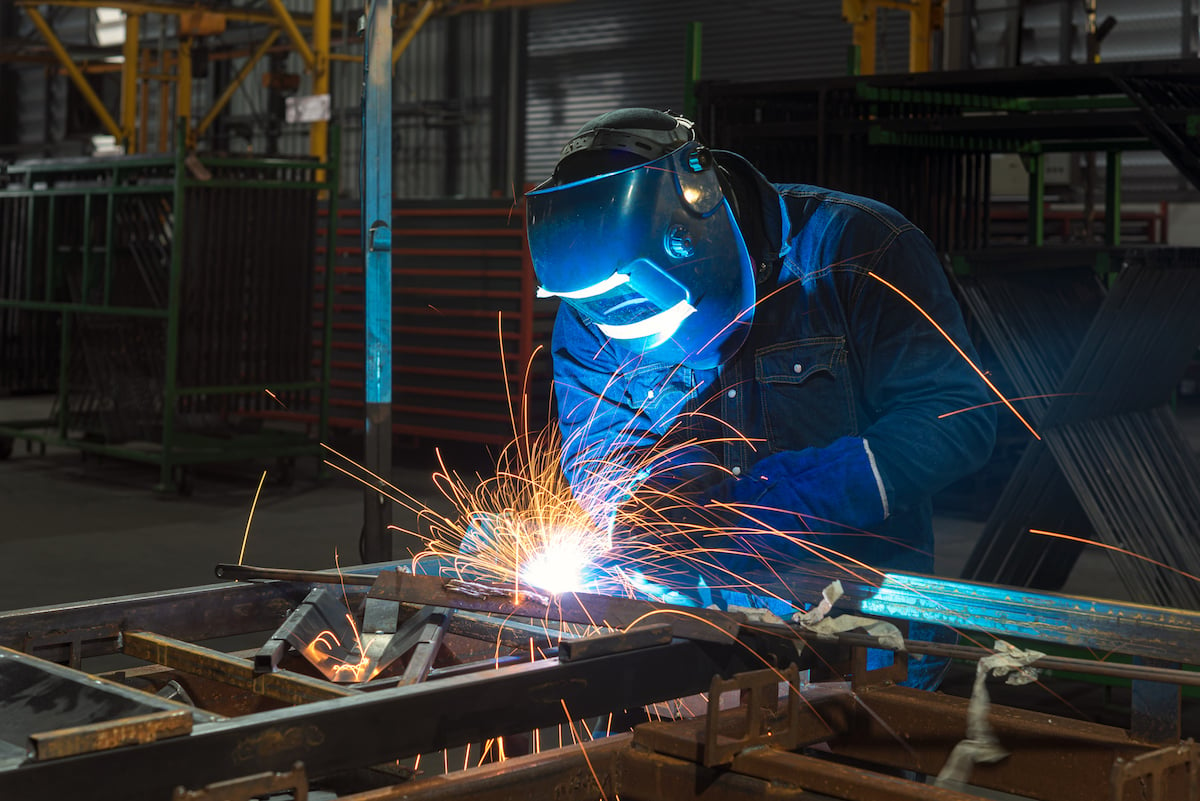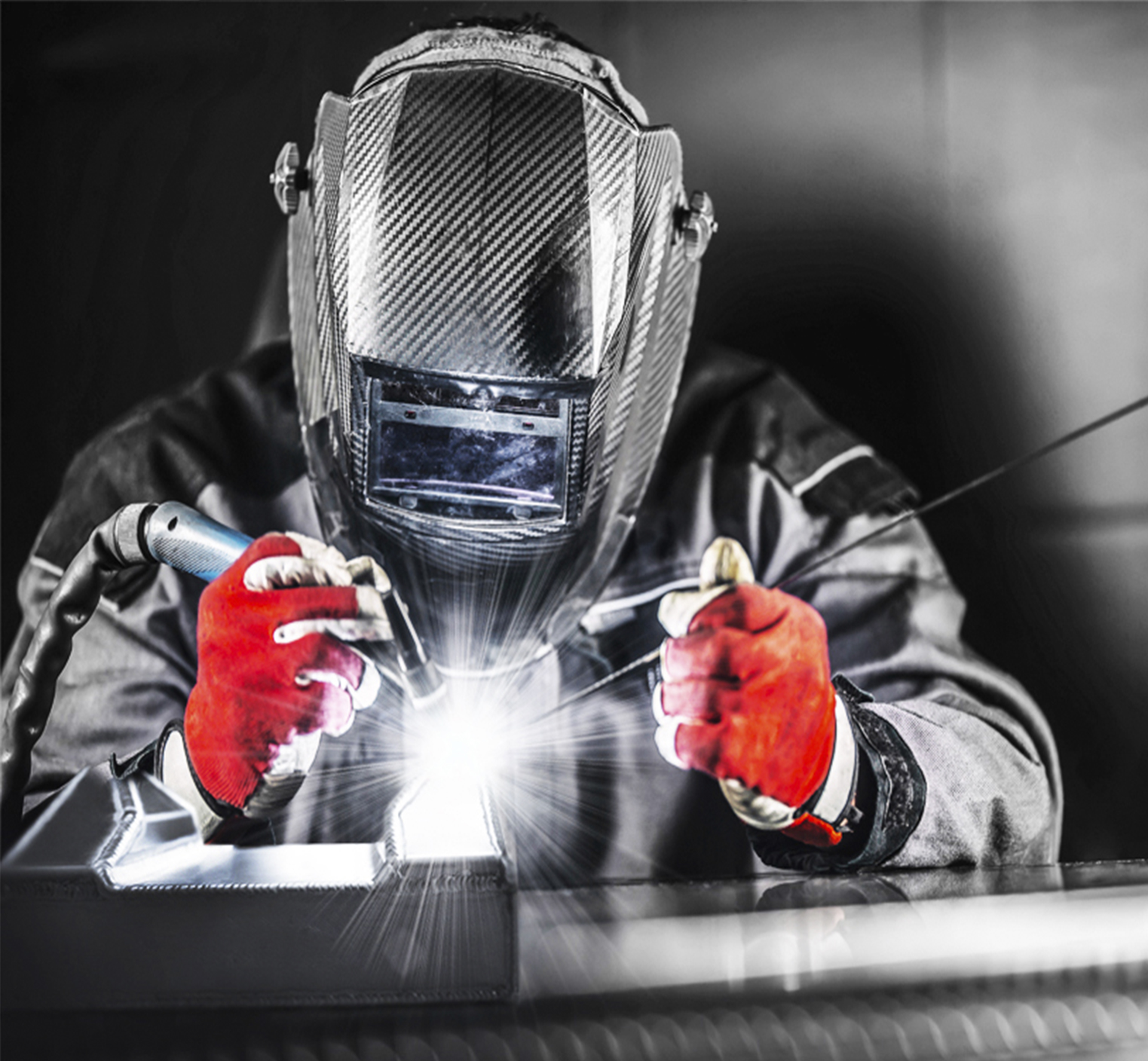All Regarding Welding: Secret Insights Into Techniques and Best Practices for Success
Welding includes a variety of methods, each fit for certain materials and applications. Understanding these approaches, such as GMAW, SMAW, and TIG, is vital for attaining excellent outcomes. The best tools and security methods can not be neglected. As prep work and fixing play important duties in the welding process, grasping these components can greatly enhance the quality of the end product. What are the essential elements that guarantee an effective weld?
Comprehending Various Welding Techniques
Welding methods incorporate a variety of approaches, each suited to particular applications and products. Amongst the most usual methods are Gas Steel Arc Welding (GMAW), Shielded Metal Arc Welding (SMAW), and Tungsten Inert Gas Welding (TIG) GMAW, also called MIG welding, is preferred for its rate and adaptability, making it optimal for slim products. SMAW, or stick welding, is favored for its simplicity and efficiency in outdoor atmospheres, especially with thicker steels. TIG welding uses accuracy and control, making it suitable for intricate work and non-ferrous steels (Montana Mobile Welding and Repair Belgrade). Each method has its distinct advantages and considerations, permitting welders to pick the most effective method based upon the task's demands, product type, and wanted end results. Understanding these strategies is crucial for effective welding
Essential Welding Equipment and Devices
While various welding techniques need details skills, the right equipment and devices are equally necessary for accomplishing top quality outcomes. Essential welding tools consists of welding machines, which vary depending on the strategy-- such as MIG, TIG, or stick welding. Protective gear, including aprons, helmets, and gloves, guarantees safety and comfort throughout the process. Furthermore, clamps and components aid safeguard products in place, making certain accuracy in welds. Consumables like welding rods, cord, and protecting gas are additionally essential elements that affect the high quality of the weld. Additionally, tools such as cutters and grinders help with surface area prep work and post-weld finishing, adding to a professional result. Spending in premium devices eventually boosts the performance and effectiveness of welding jobs.
Safety Practices in Welding
Proper safety and security methods are essential in the welding industry to secure workers from prospective hazards. Welders should put on appropriate personal safety devices (PPE), consisting of helmets with proper shading, handwear covers, and flame-resistant clothing. Sufficient air flow is vital to decrease direct exposure to damaging fumes and gases generated throughout the welding procedure. In addition, employees ought to be learnt the right handling of welding devices to avoid crashes. Fire safety and security procedures, such as keeping flammable materials away from the welding area and having fire extinguishers readily available, are required. Routine inspections of tools and workspaces can assist determine potential dangers before they lead to mishaps. By sticking to these safety and security practices, welders can develop a safer working atmosphere and decrease threats related to their profession.
Readying Materials for Welding
Preparing materials for welding is an essential step that greatly influences the top quality and honesty of the last product (Montana Mobile Welding and Repair Belgrade Fabrication). Appropriate preparation entails cleaning the surfaces to eliminate impurities such as oil, dirt, and corrosion, which can compromise the weld. Strategies such as grinding, sanding, or making use of solvents are typically utilized to accomplish a tidy surface area. In addition, making sure that the products fit with each other well is vital; spaces can cause weak welds. It's likewise important to think about the placement and positioning of the components, as this will impact the simplicity of welding and the last result. Ultimately, selecting the suitable filler product and guaranteeing compatibility with the base metals is necessary for accomplishing solid, sturdy welds
Tips for Getting High-Quality Welds
Attaining high-quality welds calls for interest to information and adherence to finest techniques throughout the welding process. Appropriate joint preparation is vital, making certain surfaces are complimentary and tidy from pollutants. Choosing the suitable filler material and welding strategy based on the base steels is crucial for excellent bonding. Preserving consistent travel rate and angle while welding can promote and protect against issues uniformity. Additionally, managing heat input is important; excessive warm can cause bending and damaged joints. If required, consistently checking the welds during the process allows for prompt modifications. Employing suitable post-weld therapies, such as cleaning and anxiety relief, can enhance the sturdiness and stability of the weld, ultimately ensuring an effective end result.
Repairing Common Welding Issues
Welding frequently provides obstacles that can impact the top quality and honesty of the final item. Typical issues such as porosity, irregular weld grains, and getting too hot can emerge, each needing specific fixing methods. Comprehending these problems is crucial for welders to improve their skills and achieve suitable outcomes.
Porosity Troubles Clarified
Although porosity can frequently be overlooked, it stays an essential problem in welding that can compromise the honesty of an ended up item. Porosity describes the existence of small gas pockets within the weld bead, which can damage the joint and lead to premature failure. This problem typically arises from pollutants, wetness, or improper protecting gas insurance coverage during the welding process. To mitigate porosity, welders should confirm that the base materials are completely dry and clean, use proper securing gases, and maintain constant welding criteria. Routinely checking the equipment and environment can also assist recognize prospective problems before they materialize in the weld. Addressing porosity properly is necessary for achieving strong, resilient welds that satisfy high quality standards.

Irregular Weld Beans
Inconsistent weld grains can greatly affect the top quality and stamina of a finished item. Various factors add to this concern, including incorrect travel speed, inaccurate amperage setups, and irregular electrode angles. When the welder moves as well rapidly, a bead may appear slim and do not have penetration, while relocating as well gradually can create too much buildup. Furthermore, making use of the wrong amperage can result in either damaging or too much spatter, both of which compromise weld integrity. The welder's strategy, such as irregular lantern activity, can additionally result in irregular grain look. To reduce these issues, welders must focus on preserving consistent, regulated motions and making certain proper devices setups to accomplish uniformity in their welds. Uniformity is vital to achieving strong and trusted welds.
Overheating and Warping Issues
Extreme warmth throughout the welding process can cause considerable overheating and deforming issues, affecting the structural stability of the workpiece. These issues often show up as distortion, which can compromise alignment and fit-up, making more setting up testing. Factors contributing to overheating consist of the option of welding specifications, such as voltage and travel rate, as well as the kind of material being welded. To mitigate these concerns, welders ought to preserve regular traveling speed and suitable warmth input while keeping an eye on the work surface you could check here temperature level. In addition, preheating or post-weld warmth therapy can assist reduce anxieties triggered by fast cooling - Welding. Normal inspection and adherence to ideal methods are necessary in stopping overheating and making certain the durability and reliability of bonded structures
Regularly Asked Questions
What Are the Occupation Opportunities in the Welding Industry?
The welding sector uses diverse occupation opportunities, consisting of placements as welders, inspectors, teachers, and engineers. Professionals can function in production, building, aerospace, and vehicle industries, benefiting from strong need and competitive incomes in different roles.
Just How Can I Improve My Welding Rate Without Compromising Top Quality?
To boost welding rate without compromising quality, one need to practice reliable methods, maintain equipment, enhance setups, and enhance hand-eye sychronisation. Regular training and seeking responses can likewise substantially contribute to attaining quicker, high-quality welds.
What Certifications Are Available for Welders?
Many certifications exist for welders, consisting of those from the American Welding Society (AWS), the National Facility for Building Education And Learning and Research Study (NCCER), and numerous industry-specific organizations. These credentials improve employability and demonstrate skill efficiency.
Exactly How Does Welding Affect the Properties of Metals?
Welding affects the properties of metals by changing their microstructure, which can cause modifications in website here toughness, ductility, and hardness. Warmth input and cooling rates throughout the process considerably impact these product features.
Can I Bonded Dissimilar Metals With Each Other?
